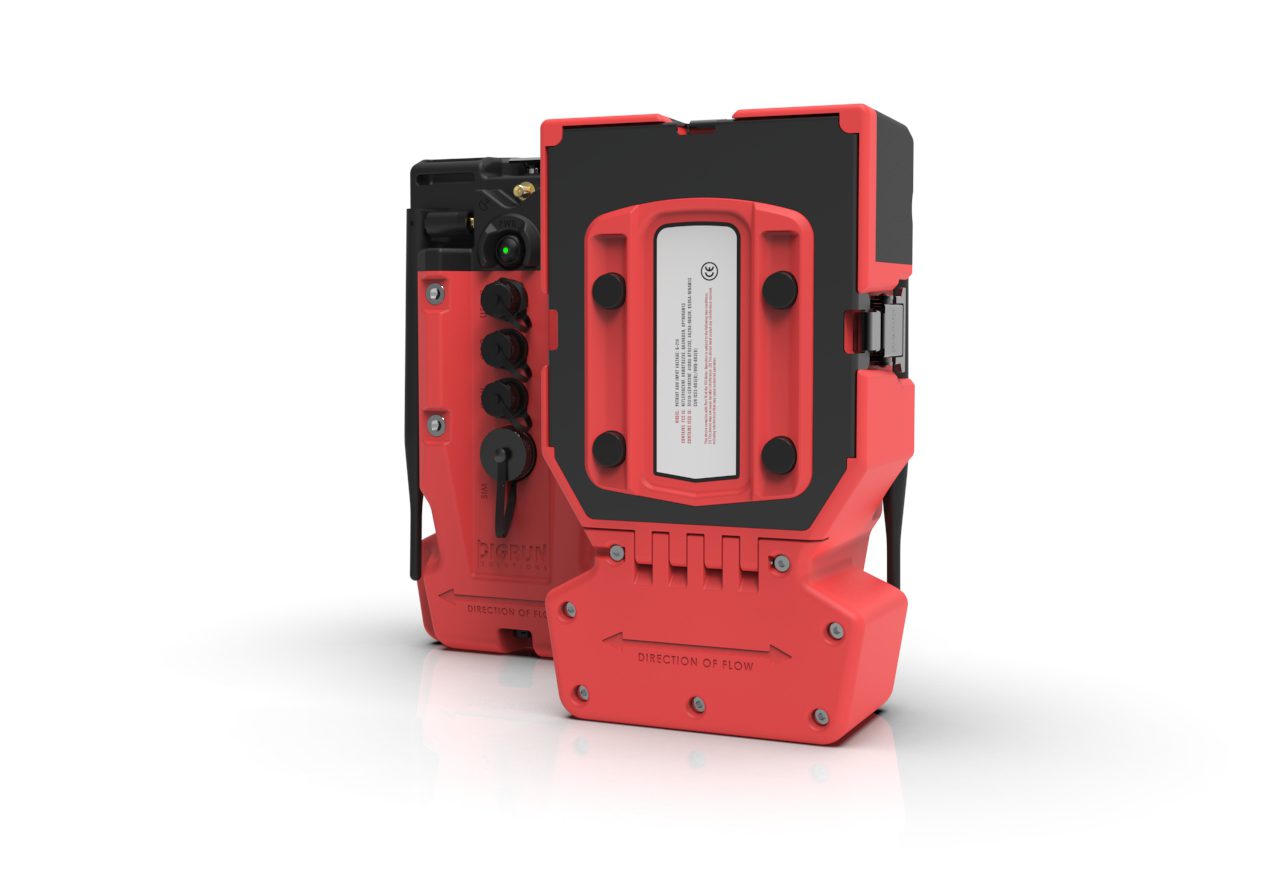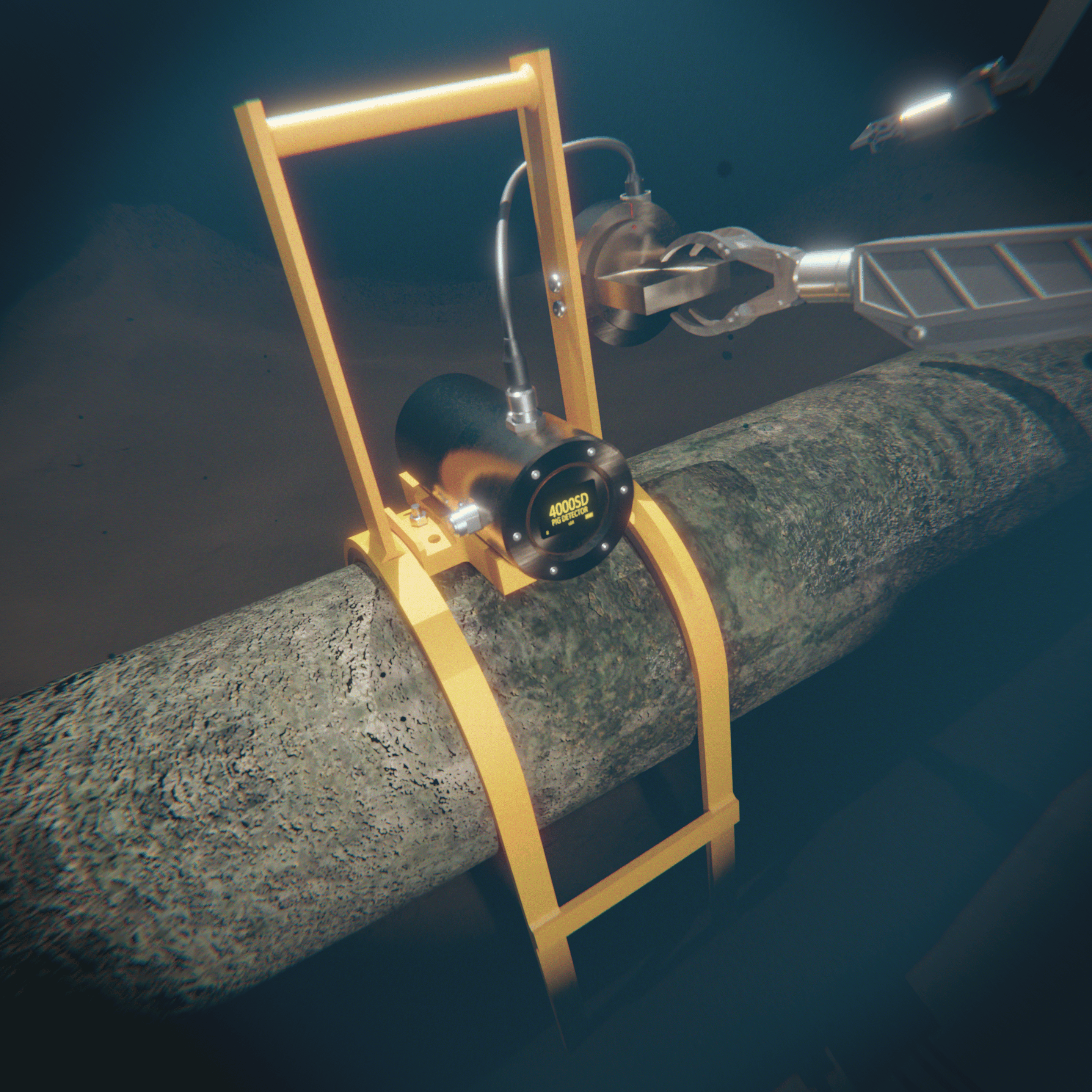Pigging plays a key role in the pre-commissioning, inspection, and maintenance of pipelines. Non-Intrusive Pig Signallers, are used to confirm that pigs have been successfully launched, have passed critical or “tricky” sections along the pipeline and finally, have been safely received. In recent years, there has been a movement in the industry towards the use of non-intrusive pig signallers over their intrusive counterparts. Non-intrusive signallers offer a safer and more efficient tracking method. In this article, we will delve into the operation and benefits of non-intrusive pig signallers and their impact on pipeline management.
What Is A Pig Signaller?
A Pig signaller, sometimes referred to as a pig detector, is a device designed to detect and indicate the passage of a pig. While the terms “pig signaller” and “pig detector” are often used interchangeably in the pipeline industry, they refer to the same technology; devices that detect and signal the passage of pigs. Their primary function is to signal to the operator when the pig has been launched and received and when it has passed a specific location, ensuring that the pigging process goes smoothly and that no pigs are lost or stuck inside the pipeline. If a pig does become lost or stuck in the pipeline, operators can use the pig signallers to narrow down the search area before a pig tracking system is used. For example, if Pig Signaller A triggers but Pig Signaller B doesn’t, the operator can assume the pig can be found somewhere between Signallers A & B. Simple, right?!
There are two types of pig signallers:
Intrusive
These are mechanical devices that signal a pig passage via an indicator when the pig pushes against the trigger (inside the pipeline) as it moves past.
Non-Intrusive
These devices, on the other hand, detect the presence of a pig without any intrusion into the pipeline. They utilise technologies such as ultrasonic or magnetic to detect the pig as it passes. Non-Intrusive pig signallers can be easily strapped to the line using ratchet straps or stainless steel banding.
Technology Overview
Before diving into the many smart features and benefits of non-intrusive signallers, we will outline the different technologies available and their application.
Magnetic
Magnetic pig signallers are certainly not a new technology but they have evolved over the years to become more reliable, customisable and smarter. Magnetic pig signallers will work with any pipeline medium – the only requirement is that pigs are carrying magnets. Here is how they function:
Magnetic Sensor: Magnetic signallers include a magnetic sensor which is typically integrated in the unit or alternatively can be provided on a cable for use on buried pipelines or where access is limited. As the pig nears, the rising magnetic field will be detected by the sensor and if it reaches the pre-set threshold level, it will register an “Approach” on the signaller.
Pig Detection: When the pig passes the signaller and continues along the pipeline, the magnetic signal will drop. This is the pig passage trigger.
Detection Alert: Once the pig has been detected, the signaller will activate an alert. This can vary from visual signals like flashing LED lights or remotely to a control room or a handheld device. The pig passage data will also be logged in the unit along with date and time for future review.
Reset and Readiness: After detecting a pig and sending out an alert, either locally or remotely, the signaller will reset after a pre-determined time, ensuring it is ready for the next pig. Alternatively, the unit can be reset manually via the push button or from the control room.
The sensitivity to magnetic changes ensures accurate and timely detection, making magnetic signallers a preferred choice for many pipeline operators.
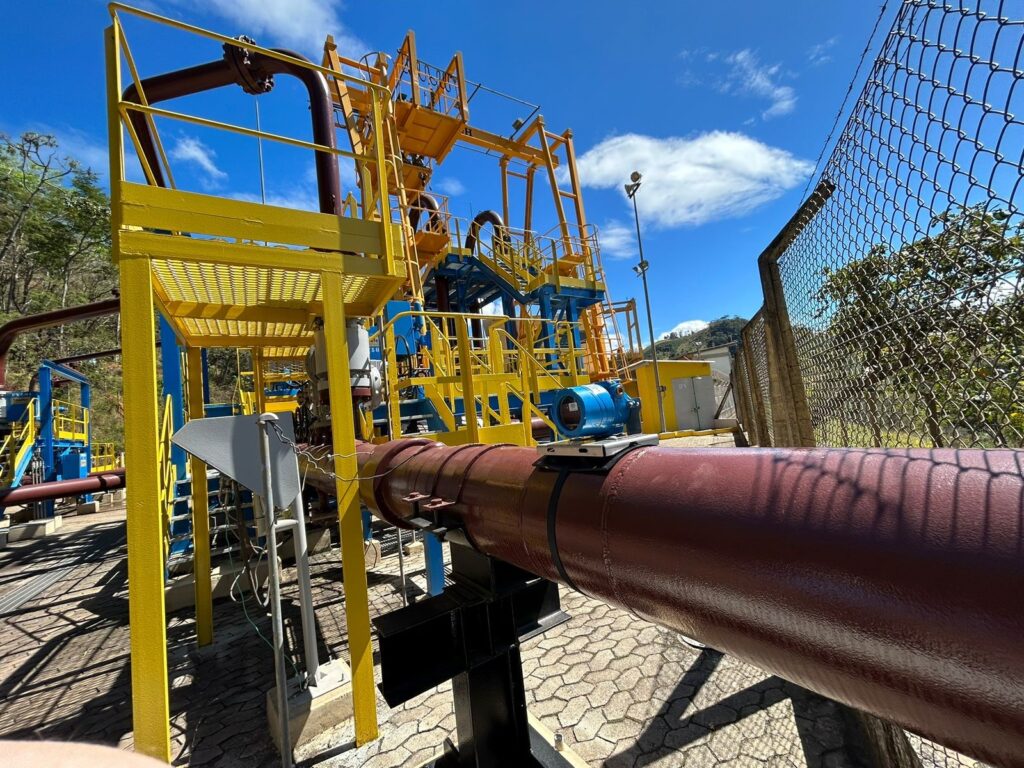

Ultrasonic
Ultrasonic pig signallers offer a sophisticated approach to pig detection and have the added advantage of being able to detect the position of a stationary pig, not just the passage of a moving one. They also don’t require any magnets or transmitters on the pig to operate.
Ultrasonic Pulse Emission: The signaller is equipped with an ultrasonic transducer, provided on a cable, and uses the pulse-echo method to detect the time of flight of ultrasonic pulses through the pipe. An ultrasonic pulse is sent through the pipe wall and provided that the line is filled with liquid, the unit can see a reflection of the pulse from the other side of the pig.
Interruption and Detection: When a pig passes, the fluid path is disturbed, interrupting the reflection of the ultrasonic pulse. This interruption is processed, and the pig passage is detected.
Filtering: Calibration of the detection algorithm to change the filter, allows the passing of smaller objects, such as debris, to be ignored.
Detection Alert: As with the magnetic pig signallers, ultrasonic signallers have the capability to locally or remotely signal pig passage and log the pig passage data
Ultrasonic Locating: As pigs approach receivers, they can often lose momentum and stall immediately after the main line tee but prior to the pig receiver isolation valve. By moving the ultrasonic sensor along the pipeline, the precise position of the pig can be located, preventing lengthy delays establishing pig position.
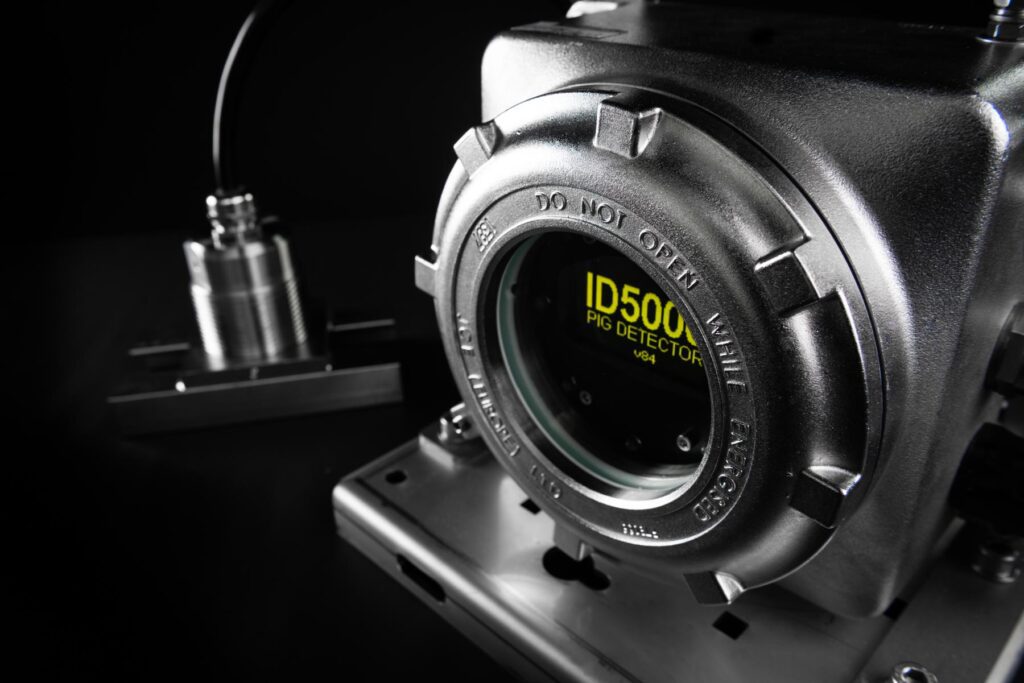

Acoustic
Acoustic pig signallers operate on the principle of sound detection and can be used in any pipeline medium without the need for magnets or transmitters. Here is a breakdown of how they function:
Sound Detection: Acoustic Pig Signallers monitor the acoustic emissions created by the vibrational and acoustic noise generated as a pig moves through a pipeline.
Filtering and Processing: To avoid false alarms, the device employs an advanced detection algorithm. These filter out unrelated noises and focus on the characteristic sound signatures associated with pig movement. To avoid false triggers, it is recommended these units are not installed close to features that could potentially have a similar noise profile to a passing pig such as an opening valve. It is also recommended that a test run is completed to confirm successful installation and reliable detection.
Alert Activation: Once the device identifies the sound of a pig approaching, it will signal “Pig Approach.” Once the pig passes the detector and the sound level decreases to the required level, it will signal “Pig Passage.” This signal can be viewed remotely or in the control room.
System Reset: After a successful detection and alert, the signaller typically resets to its default state, readying itself for the next detection.
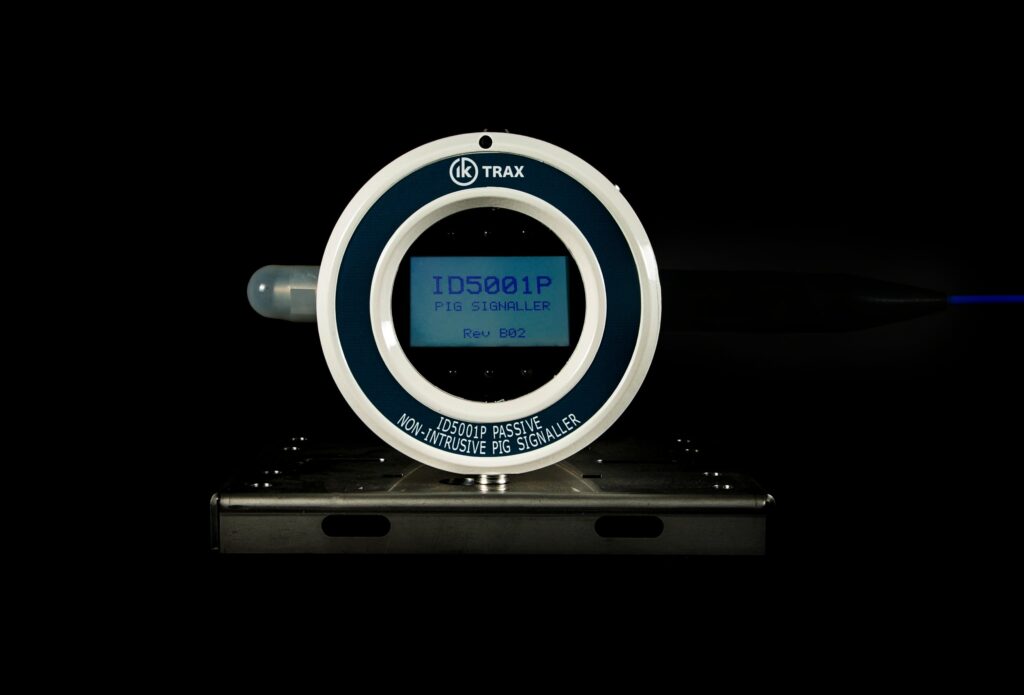

As you can see, there is no one size fits all. Depending on the specific needs and challenges of a given pipeline system, operators might opt for one or a combination of the technologies. For more guidance on selecting the best option for your needs, check out our article on Choosing the Right Pig Signaller Model – Beyond the Datasheet.
Key Advantages of Non-Intrusive Signallers
Converting to non-intrusive pig signallers brings with it a host of benefits that impact operations, the environment and the well-being of personnel and the surrounding community.
Cost Effectiveness: While non-intrusive signallers may (but not always) come with a higher initial investment, the long-term economic advantages are clear. Reduced maintenance needs, downtime and workforce requirements and longer equipment lifespan mean significant cost savings over time.
Environmental Benefits: Intrusive pig signallers require a nozzle hole to be cut into the pipeline before a pipe fitting is welded into it. Any weld is an emissions risk. Furthermore, intrusive signallers have multiple potential leak paths as a pressurized mechanical instrument.
Health and Safety: Non-intrusive signallers, by eliminating the need for direct physical contact and interventions, minimize risks associated with equipment failures. This ensures safer operational environments.
Advanced Features and Flexibility: Modern non-intrusive pig signallers come equipped with a range of advanced features like data logging, remote communication and accompanying apps allowing you to receive data and change parameters on a handheld device. Their flexibility ensures that operators have a versatile tool that can be tailored to specific operational needs.
Non-intrusive pig signallers represent a significant advancement in pipeline management, emphasizing safety, efficiency, and environmental awareness. Using technologies like magnetic, ultrasonic, or acoustic methods, these units streamline operations without compromising pipeline integrity. They mitigate operational risks, reduce environmental impact, and introduce modern features that enhance operational flexibility. The adoption of this technology is essential for a efficient and sustainable future.
